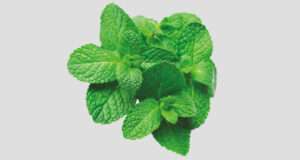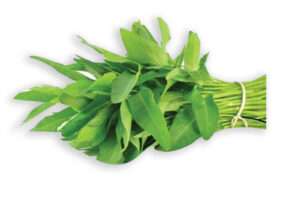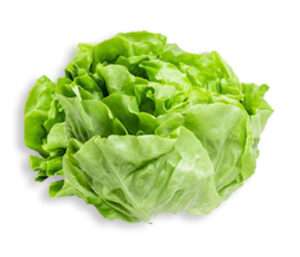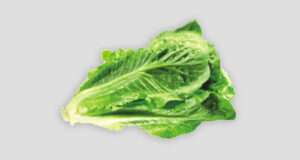The Beginner's Guide to Mushrooms: What You Need to Know?

Mushrooms have gotten a bad rap over the years with the common man believing them to be poisonous, but they are quite good for us and they are a much healthier alternative to meat. In addition to increasing your immune system, mushrooms can also help you beat depression. But before you start gobbling down mushrooms every day, it’s best to know a little bit about them and this article will help you do just that by providing you with a beginner’s guide to mushrooms.
What are mushrooms?
You might be wondering: what are mushrooms? Well, they’re the fruiting body of a fungus! Fungi are a group of organisms that usually live in the soil. They can be microscopic or visible to the naked eye. Some fungi grow on plants, some grow on animals, and some even grow on other fungi!
The mushroom is just one type of fungus that grows above ground. The spores develop into mushrooms when they’re ready to reproduce. Mushrooms can be found growing in many places around the world—they’re just not always easy to find!
What are the different types of mushrooms?
Mushrooms can be confusing, especially if you’re new to them. There are a lot of different types, and they can be hard to tell apart. Luckily, we’ve got your back! We’ll walk you through what the most common mushroom types are, plus how to tell them apart so that you can make sure you’re getting the right one every time.
There are three main groups or types of mushrooms: edible mushrooms (including button, oyster, and shiitake), medicinal mushrooms (including reishi and lion’s mane), and poisonous mushrooms (including amanita). Edible mushrooms are safe to eat but may cause allergic reactions in some people; medicinal mushrooms are mostly used as supplements or herbal remedies; poisonous mushrooms should NEVER be eaten!
How do mushrooms benefit the body?
Mushrooms are a versatile foodstuff that offers a wide range of health benefits. Here are 8 of the most notable:
1. Mushrooms are high in protein and vitamin B12, two nutrients essential for maintaining a healthy immune system.
2. As a result, they can help reduce cholesterol levels and protect the heart.
3. Cancer and other diseases can be prevented by eating them, as they contain antioxidants.
4. They may help treat conditions such as anxiety and depression, thanks to their antidepressant effects and ability to regulate brain serotonin levels.
5. Those with weak immune systems or chronic conditions like asthma or allergies may benefit from them since they boost the immune system and fight infection.
6. Weight loss mushroom that helps you feel fuller with less food for longer periods.
7. Mushrooms are low in calories but high in protein, fiber, vitamins, and minerals. One cup of cooked mushrooms contains only 20 calories but packs 7 grams of fiber, 4 grams of protein, and 6% of your daily recommended intake for calcium!
8. The vitamin D content found in these fungi also helps keep your bones strong by increasing bone density and reducing your risk for osteoporosis.
How to prepare and cook mushrooms?
When it comes to cooking with mushrooms, it’s important to understand the difference between them. In some cases, mushrooms should be cooked quickly, while others can be cooked for longer periods without losing their taste or texture.
To get the most out of your mushrooms, you need to know how to prepare and cook them. You might be wondering how you prepare mushrooms. Here’s what you need to know.
Depending on what type of mushroom you’re using, there are different ways you can prepare them for cooking. For example, some types of mushrooms need to be cleaned before eating, while other types shouldn’t be washed at all! Adding mushrooms to your meals is a delicious and healthy idea. They’re also super easy to prepare and cook, so you can add them to your favorite recipes without any trouble at all. Here’s how:
1. Rinse your mushrooms.
2. Cut off the ends, if needed.
3. Chop them up, if desired.
4. Cook them in a pan with a bit of oil or butter and some salt and pepper if you like!
5. Once the oil is hot, chop the mushrooms and add them to the pan. Cook for about 10 minutes, until they are soft and browned.
6. Remove from heat and serve!
Which mushroom is best for you?
You might be wondering which mushroom is best for you. There are many options to choose from, so it can be difficult to choose just one. The following are some of the most popular mushrooms:
Chaga: This mushroom is found in the birch tree, and it’s a superfood that contains antioxidants and B vitamins. It’s also known to help with immune function, detoxification, and anti-aging.
Lion’s mane: This mushroom is also known as “the king of mushrooms” because it contains polysaccharides (carbohydrates) that have been shown to inhibit cancer growth in mice. Lion’s mane is also used to boost brain function by increasing blood flow and supplying oxygen to tissues that need it most—like your brain!
Reishi: Also known as “the mushroom of immortality,” reishi helps to boost immunity and fight off viruses like colds or flu. It contains an active ingredient called ganoderic acid that has been shown to stimulate immune cells and produce interferon—which helps fight off infections!
Turkey Tail: Turkey tail produces beta-glucans—a type of fiber that helps promote healthy digestion while also reducing cholesterol levels in your liver. Plus, they contain tons of antioxidants.
Maitake: Maitake (also known as hen-of-the-woods) is an incredibly versatile mushroom that can be used in soups, stir-fries, or even eaten raw. It’s got a rich and earthy flavor that pairs well with many other ingredients.
Cordyceps is another great choice for beginners because it has a mild taste that makes it easy to incorporate into your favorite dishes. You can add cordyceps to anything from salad dressing to soups or stews—the possibilities are endless!
Shiitake mushrooms have been around for centuries and have been used in traditional Chinese medicine for thousands of years. They have a rich and savory flavor that adds depth to any dish they’re added to—whether it’s soup or noodles!
Conclusion
So there you have it, our guide on how to grow rocket leaves at home. We hope you’ve found this article to be helpful and that you’ve learned a few things along the way. We’re always excited to share our knowledge and experiences with our community, so if you have any questions, comments or suggestions, please don’t hesitate to reach out to us!
FAQs
Mushrooms are fungi that grow underground and absorb nutrients from the soil. Nevertheless, mushrooms are considered a vegetable for mushroom nutrition since they are eaten like vegetables! Mushrooms are low in calories and low in fat—and a great source of vitamins and minerals such as vitamin D, potassium, copper, and selenium.
Sure, you can eat mushrooms every day! You should only be concerned about the type of mushroom you consume. Different types of mushrooms have different health benefits and risks associated with them—some are better for your heart, some are better for your brain, some are better for your skin, etc. It’s important to know which type of mushroom you’re eating so that you can maximize their potential benefits and minimize their potential risks.
Conclusion
Now that you know what mushrooms are and what they can do, hopefully, you are more knowledgeable about them. We encourage you to further research these important organisms—to discover their many medicinal properties, their ecological importance, and the many ways in which they can be incorporated into your diet. After all, mushrooms are tastier than ever before—just give them a try!






